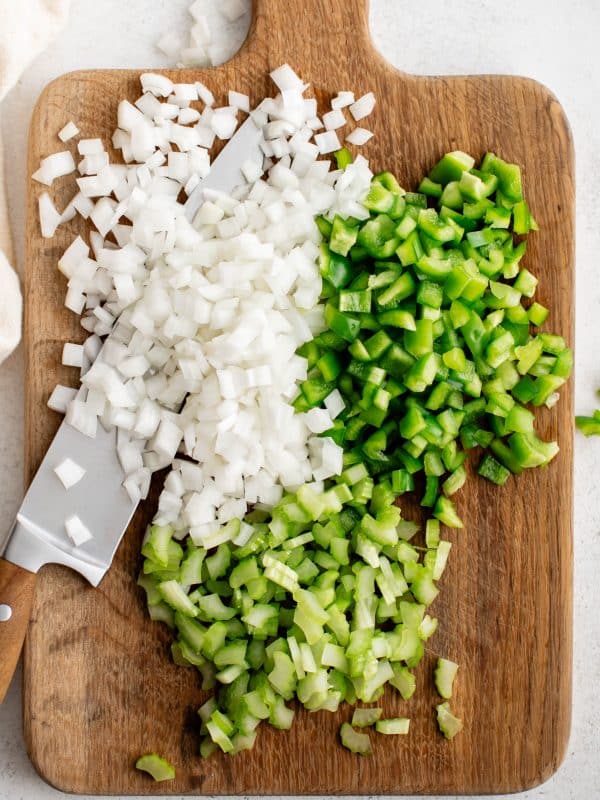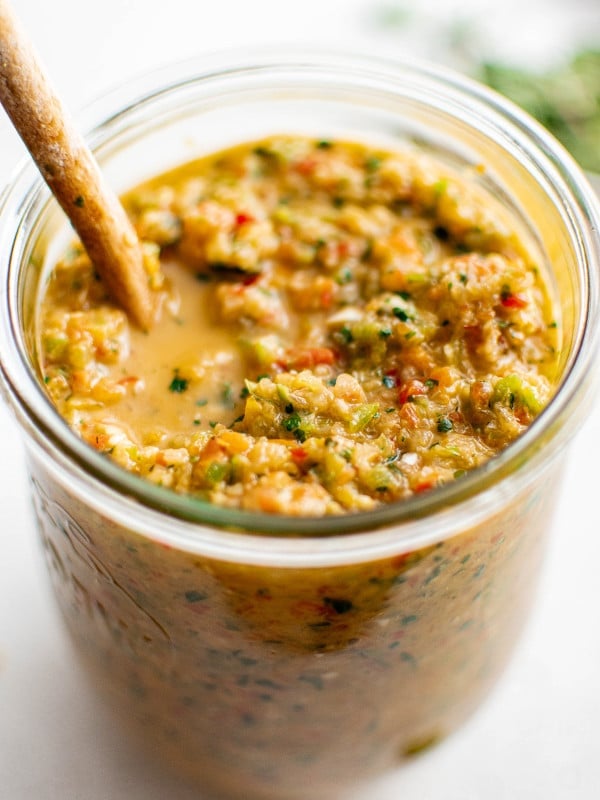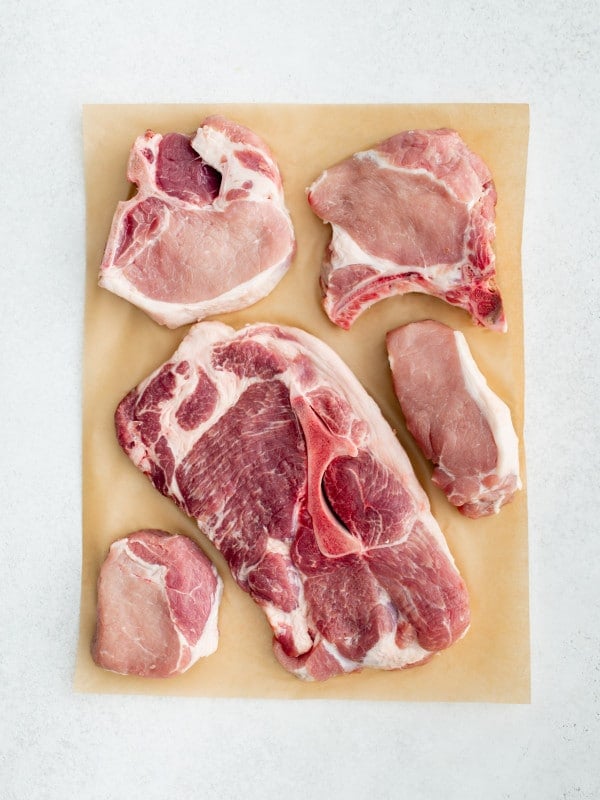This post may contain affiliate links. See my disclosure policy.
Although we’ve all probably heard of barley, whether because of the classic beef barley soup or another staple dish, it’s a grain that doesn’t get enough attention and ought to be used more often. It’s an incredibly versatile grain that’s packed with important nutrients.
In this post, I’m going to give you an overview of barley, its nutritional value, basic preparation methods, and other key information you can use to incorporate this delicious grain into your diet!

Barley Overview
Barley is a cereal grain and a member of the grass family with the scientific name Hordeum vulgare. Before it’s harvested, barley grows in tall, golden stalks, with the grains at the top. For the most part, barley is grown all over the world in temperate climates. It is the fourth most produced crop globally after rice, wheat, and maize.
Barley is an extremely versatile grain and is used as the base for soups and stews, in bread, and as a side to delicious, savory meals like my skillet Salisbury steak. Some people even eat barley flakes with some added sweetener as a breakfast cereal. Barley is also fermented to make alcoholic beverages and pastes and is used as fodder for livestock.
Hulled Barley vs. Pearled Barley
You can buy either hulled or pearled barley.
Hulled barley, considered a whole grain (groat) is considered more nutritious as it has only had the indigestible outer husk removed. It is darker in color.
Pearled barley is not a whole grain and therefore not as nutritious. It has been processed to have both the outer husk removed but also the highly nutritious bran layer. It has a lighter color with a more matte appearance.
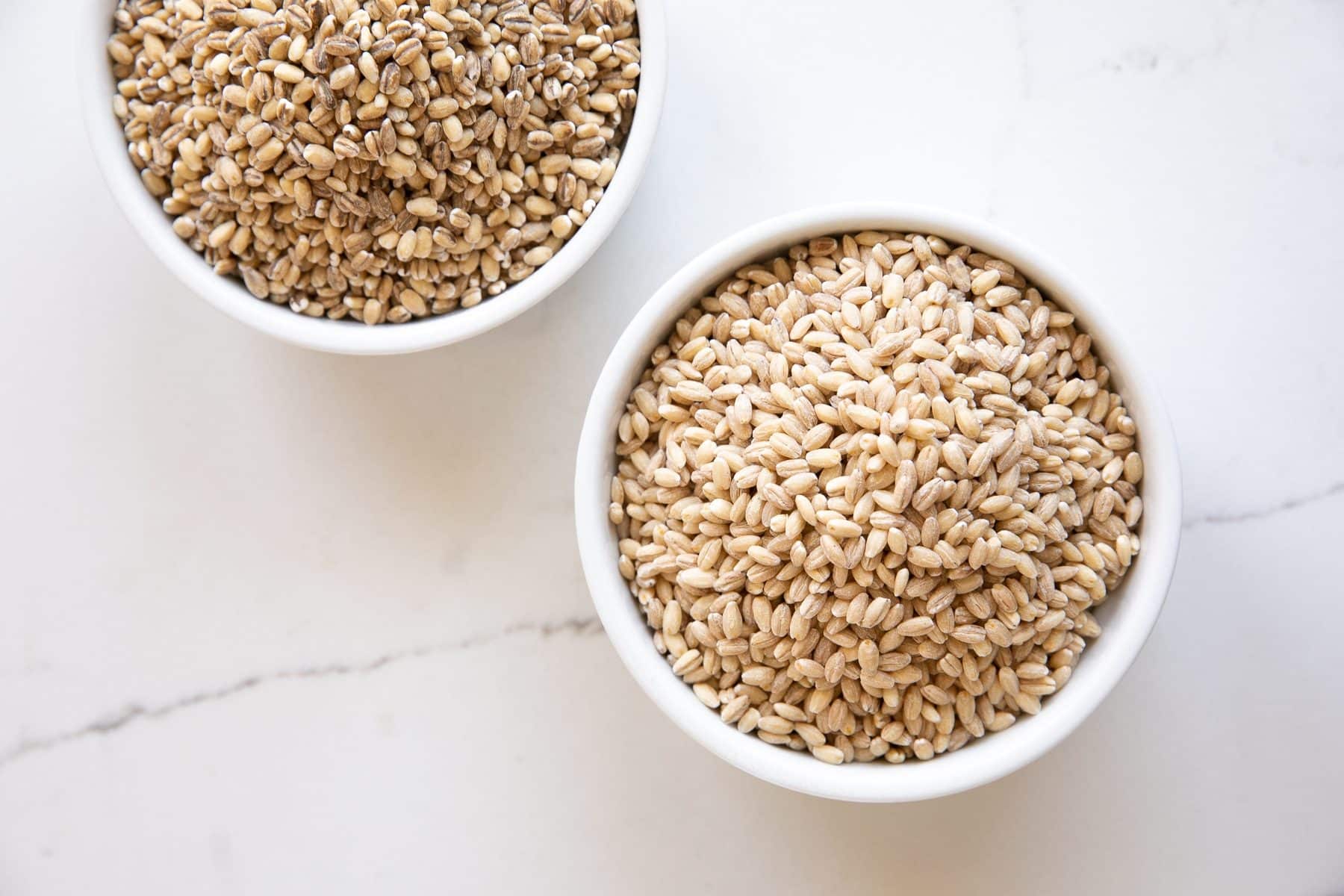
What Does Barley Taste Like?
Barley has a rich, nutty flavor and a thicker, more chewy texture than most other grains. Somewhat comparable to the texture of al dente pasta, barley makes a great, healthy substitute for dishes containing other grains like brown rice or quinoa, like my Instant Pot butternut squash risotto.
Is Barley Good for You?
Is barley good for you? This short answer is yes!
As I mentioned, whole-grain barley is slightly healthier than pearled barley. Several studies have made health claims that eating whole grains rather than refined grains can reduce your risk for certain diseases such as cancer, Type 2 Diabetes, cardiovascular disease, and coronary heart disease.
That being said, both types of barley are incredibly nutritious because they are good sources of vitamins, minerals, and antioxidants that help fuel your body so that it can function better. Specifically, barley contains dietary fiber, magnesium, manganese, and selenium. It’s also rich in vitamins like phosphorus, niacin, and vitamin B6. Selenium is a nutrient that the body needs for a multitude of reasons including helping our bodies fight infection.
Barley also has a relatively low glycemic index, which means that it releases glucose slowly and evenly in the body, making it a great choice for people who need help lowering and regulating their blood sugar levels. In fact, barley has one of the lower glycemic indexes of all grains.
It may even be effective in lowering high cholesterol, as it contains beta-glucans that can lower “bad” cholesterol.
If you need yet another reason to incorporate barley into your diet, its high soluble fiber content means that it improves gut function by helping move food through your system. This makes it a good choice for anyone trying to lose weight or fight obesity.
Potential Risks
Barley is generally considered a healthy and nutritious addition to anyone’s diet. However, there are some people who may want to avoid this whole grain.
First, barley contains gluten. Individuals with celiac disease or gluten intolerance will want to avoid barley as they will have a hard time processing this grain.
Also, barley contains fructans, a fermentable type of fiber that can cause irritation in the bowels for people with IBS or similar digestive problems by causing excess gas and bloating.
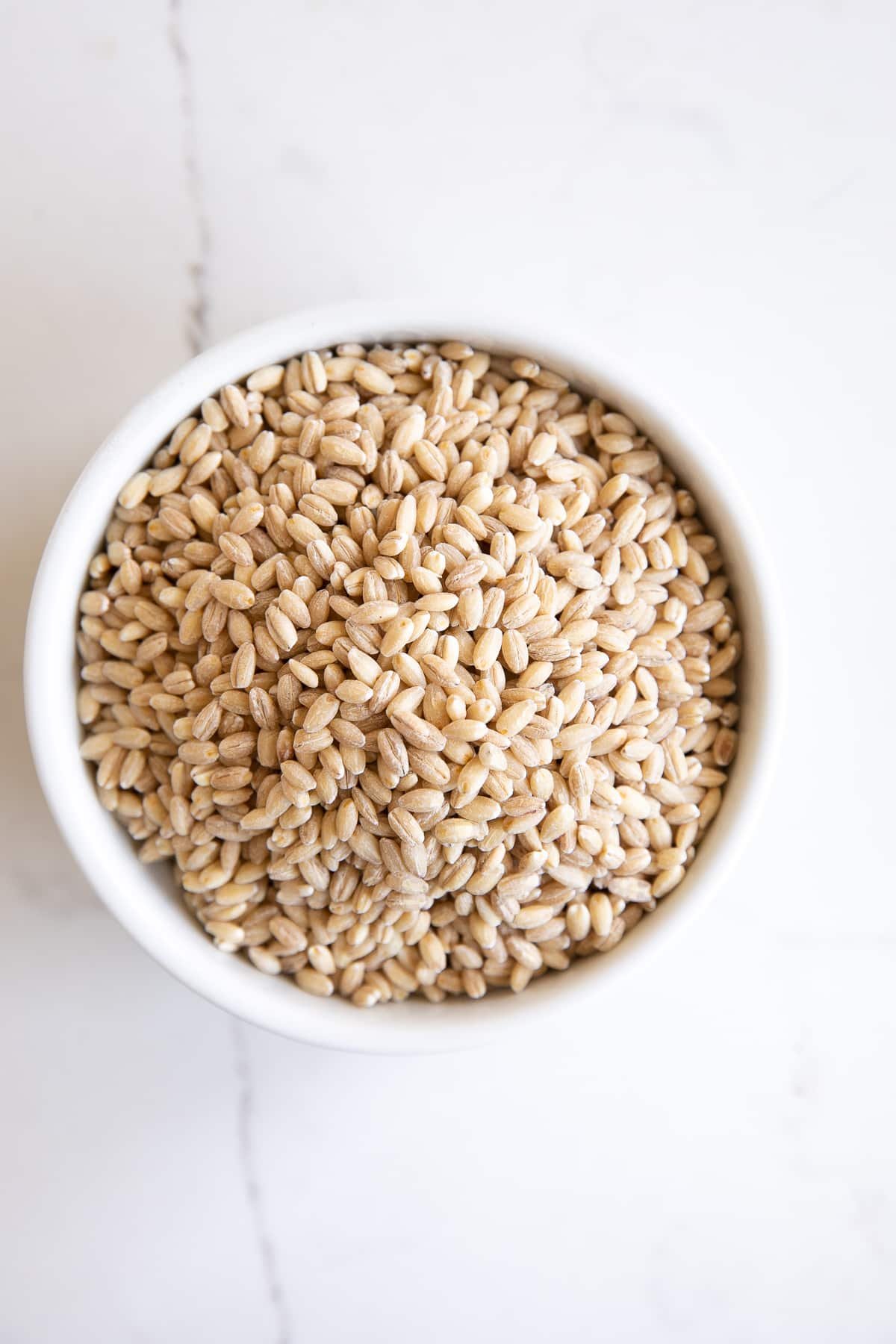
How to Cook Barley
There are two main types of barley: hulled barley and pearled barley. Given that they are processed slightly differently, they are also prepared differently. However, for both hulled and pearled barley, it’s a good idea to rinse your grains before you prepare them, although this step is not required.
Cooking Barley at a Glance
Ratio: 1 part barley: 3 parts water
Cooking Time: 40+ minutes (hulled barley), 25 minutes (pearled barley)
Yield: Approximately 3 cups
Leftovers: In an airtight container in the refrigerator for up to 3-5 days or in the freezer for up to 1 month.
Hulled Barley
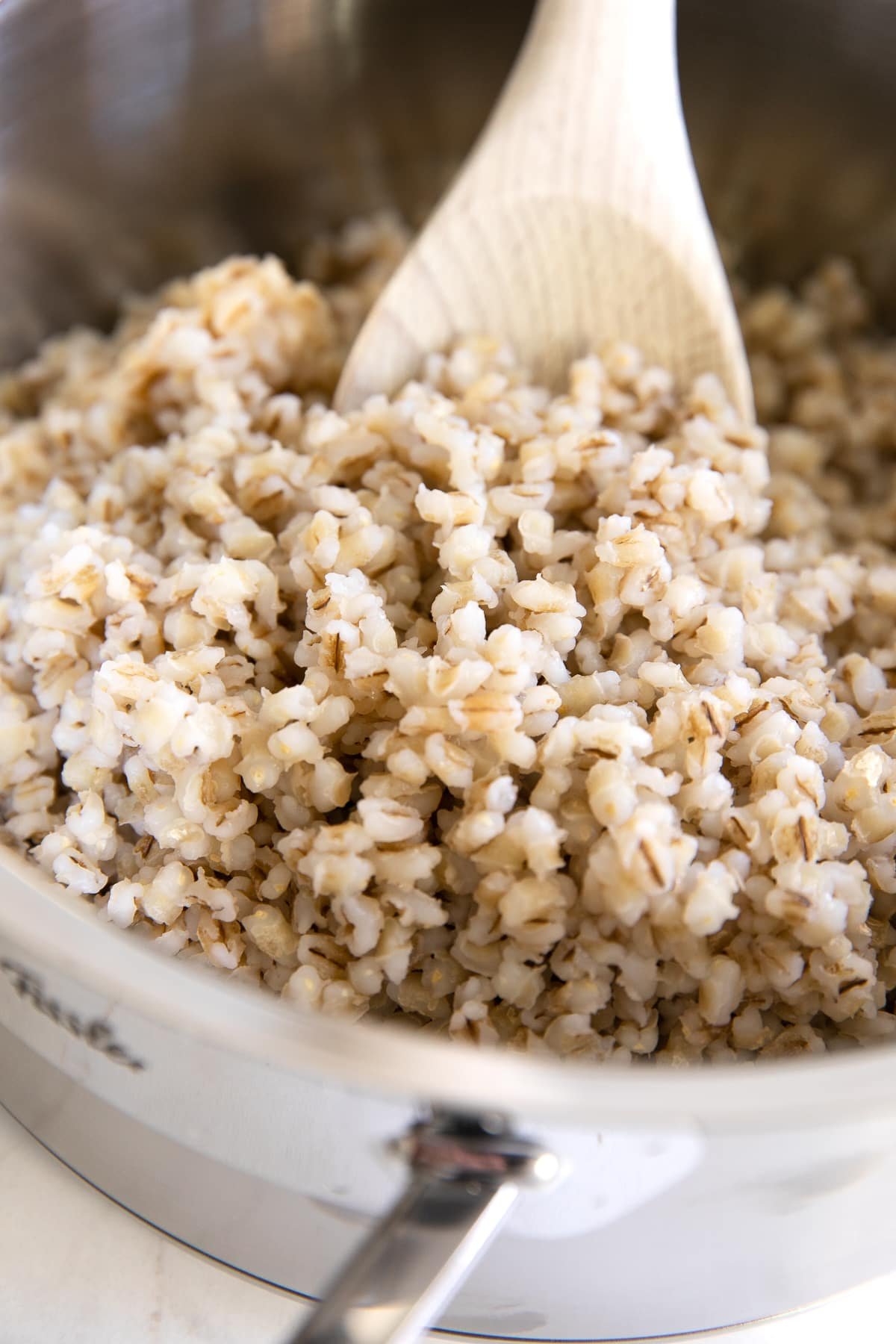
- Bring three cups of water and one cup of rinsed barley to a boil in a pot. To draw out the flavor of the grain, add a pinch of salt to the water.
- Once the water and barley are boiling, reduce to low heat and bring the mixture to a simmer. Cover the pot.
- You’ll want to stir occasionally, but for the most part, you can just let your barley cook for about 40 minutes or so. As with all grains, you can decide when the barley has reached your desired texture, but as a rule, you know your barley is done when it’s almost tripled in size and is soft.
- Once your barley reaches the desired texture, take the pot off the stove and drain any additional water. Fluff the barley with a fork to loosen it up and enjoy.
Given that hulled barley is less processed, it will absorb less water during the cooking process. If you’re not satisfied with the texture of your hulled barley after 40 minutes, continue to let it simmer for up to 90 minutes, adding more water to the pot if needed.
Pearled Barley
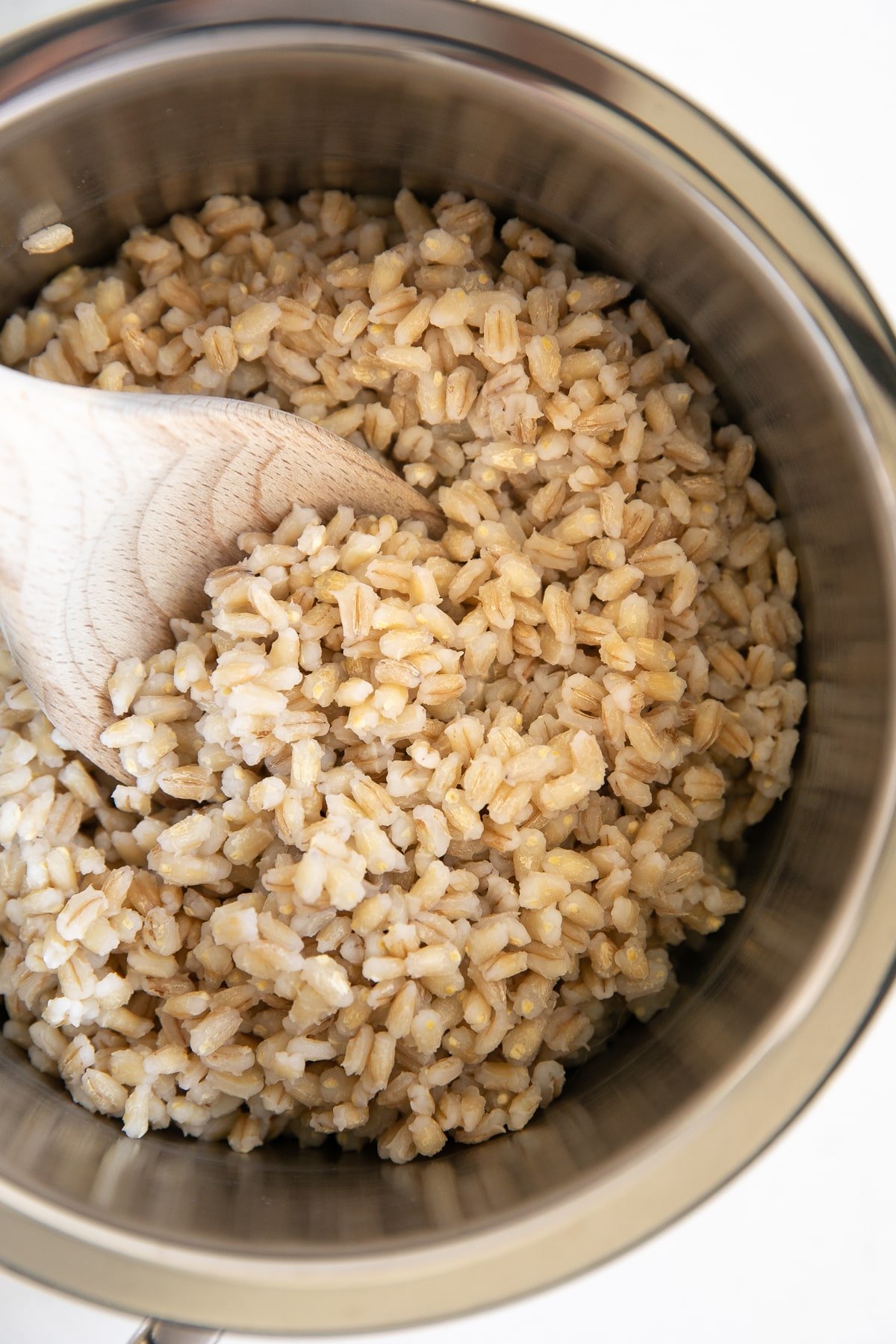
The process for cooking pearled barley begins in the same way as that of hulled barley. Again, you’ll want to bring your pearled barley to a boil with about three cups of liquid, either water or broth.
Once simmering and covered, you should let pearled barley cook for about 25 minutes and then begin to check it to see if it’s cooked through. Given that pearled barley is softer than hulled barley, it will have a creamy, risotto-like consistency when done.
Just as with hulled barley, once your pearled barley has softened nicely, take the pot off the stove. Keep in mind that pearl barley releases a lot of starch into the water when cooking. For that reason, the barley water can be used to thicken sauces, soups, and stews, so don’t drain it right away if you want to use it in your dish.
Uses for Barley
Barley, in its whole or refined form, can be used as a side dish or a pilaf. It can be added to soups and stews, like this Persian pomegranate and walnut stew, to make them thicker and more filling. Barley also comes in the form of flakes, which can be used like rolled oats or grits.
You can also find barley flour to use as a substitute for plain or whole wheat flour.
Additionally, barley is a key ingredient in several different pastes and beverages. I’m going to take a look at two of the most popular of those: miso and whiskey.
Miso
If you’ve ever had a delicious salad dressing with a salty, umami flavor you just couldn’t quite place, chances are you were tasting miso! Miso is a fermented Japanese paste and is a cultured mix of soybeans, salt, koji, and grain such as barley. You’ll find miso in my shrimp and avocado salad with miso dressing (a reader favorite!) and this miso coconut butternut squash soup.
Whiskey
Barley is also used to make several alcoholic beverages such as whiskey. In order to make whiskey from barley, the grain goes through the process of malting, mashing, fermentation, and distillation.
Conclusion
Barley is a cereal grain with a rich, nutty flavor. Although hulled barley is more nutritious than pearled barley, both varieties are healthy, good sources of fiber, selenium, and other vitamins and minerals.
Given that it is a thicker grain, barley takes longer to cook than most other grain varieties and can be used as a substitute for pasta and risotto. Once it’s finished, barley has a soft, fluffy texture. Additionally, barley is one of the main ingredients in pastes and beverages like Japanese miso and whiskey.
As one of the ancient grains, humans have been eating barley for about 10,000 years. So next time you’re craving a meal that our ancestors also would have enjoyed, grab your barley and get cooking!


